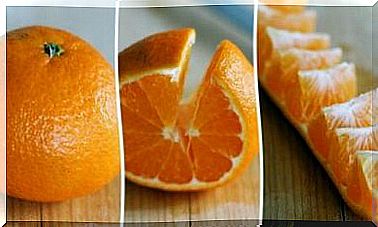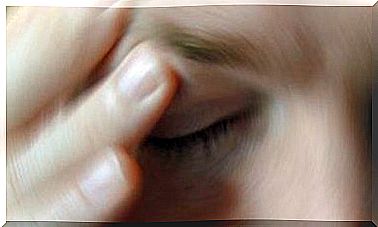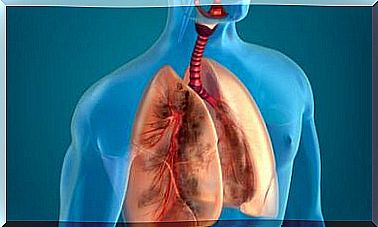The Kidneys: Anatomy And Functions
Your kidneys are essential for maintaining your blood pressure and the function of vitamin D, among other things. Learn more about this important organ today.
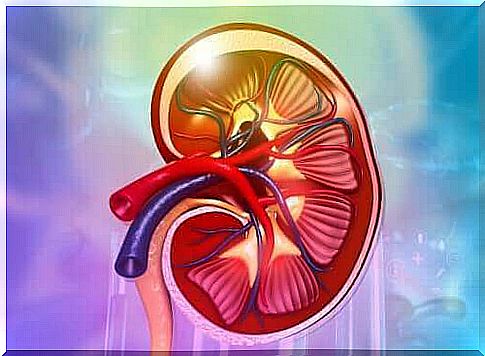
The kidneys are a complex organ that is responsible for removing waste from your body. This is done through the urine. Usually everyone has two kidneys. They are located in the back of the abdomen, next to the spine and under the ribs.
The kidneys are shaped like beans. They are a vital organ because you cannot live if they are not working properly. Thanks to technological advances, however, there are now techniques such as dialysis and transplants that doctors can use to replace the kidneys.
In addition to producing urine , the kidneys are involved in many other processes, such as regulating blood pressure. Therefore, in today’s article we want to explain the tasks of this body. You will also learn more about the anatomy and key features of your kidneys.
Kidney anatomy
As we mentioned earlier, the kidneys are bean-like in shape, with one side being concave and the other side being convex. The renal artery enters this organ on the concave side. It carries the blood to the kidney, which contains the waste from the body. The renal vein and urethra also leave this organ on this side.
The kidney consists of two main parts: the renal cortex ( cortex renalis ) and the renal medulla ( medulla renalis ). The kidney cortex is the outer part and this is where the greatest blood flow occurs. Their main task is filtration and reabsorption. In addition, it contains almost all of the glomeruli, which we will explain in more detail later.
The medulla (the kidney medulla) is a set of structures that are responsible for carrying the urine produced in the kidney into the ureters. The ureter is a tube that leads into the bladder, where urine is collected and then used to be eliminated.
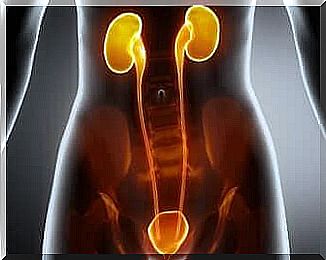
The functional units of the kidneys are the nephrons. A nephron is the smallest functional unit of the kidney and is where blood filtration and urine production take place. There are approximately 800,000 nephrons in each kidney.
Although their structure is very complex, one can basically say that they are made up of a series of cellular structures and membranes through which blood flows and is filtered. They are also responsible for excreting certain substances and reabsorbing others, such as potassium.
What are the functions of the kidneys?
We mentioned earlier that the main function of the kidneys is to remove substances from the blood through the urine. However, that’s not their only job. In addition, this organ also has a very important role in the secretion of certain hormones and substances.
First of all, we need to emphasize that the kidneys enable the conversion of vitamin D into its active form. This vitamin is vital for the metabolism of calcium. The kidney also produces erythropoietin, which stimulates the synthesis of red blood cells in your body.
In addition, the kidneys are certain processes that enable homeostasis in your body of essential importance. In other words, they help your body maintain internal balance even when the environment changes.
For example , the kidneys regulate both blood pressure and the pH of your blood. In addition, they also control plasma volume by regulating the concentration of urine. This allows them to prevent water loss in dehydration situations.
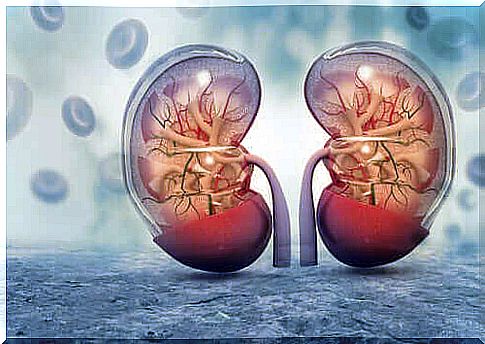
How do they filter the blood?
The blood passes through the renal artery to the nephrons, where this artery branches into smaller ones that form the glomerulus. Small molecules, liquids, and toxins can enter the tubules through the glomerulus. In this way, they hold back the largest elements like cells.
In addition, the glomerulus consists of a series of tubes in which the body reabsorbs a large part of the filtered water or certain substances it needs. For example, it can reabsorb sodium or potassium molecules.
Final thoughts
In summary, we can say that the kidneys are a complex organ that not only produces urine, but is also responsible for numerous other functions. These include the synthesis of erythropoietin and the regulation of your blood pressure.


